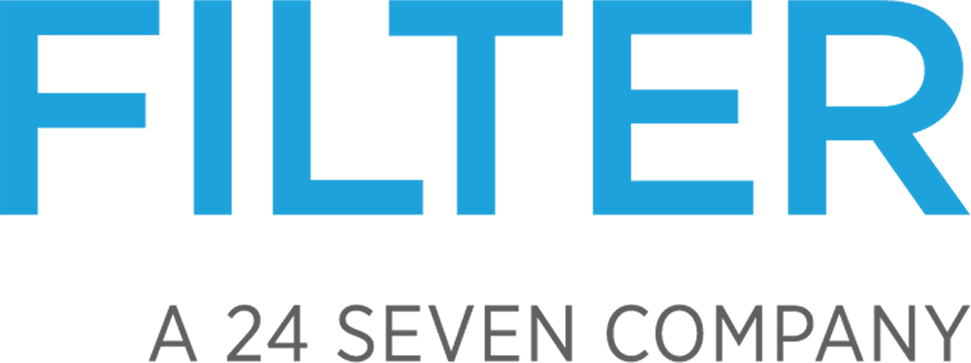The emergence of the UX discipline is highly necessary for today’s business climate. We wrote about this before, where we uncovered that talent shortage is the top risk businesses are facing today. We also interviewed our own sourcing team to pinpoint some of the attributes that are found in UX talent and what sets them apart. But not all UX experts are the same. In fact, many have nonlinear starts, beginning a career in one field, only to realize that the nature of what they love in their job is really user experience. Fortunately, these diverse backgrounds are closing the gap that the burgeoning trend toward customer-centric business has created.
To learn stories of unorthodox UX career starts, we looked to our talented Filterati. Through iterative processes, they learned what they loved about user experience and applied their backgrounds and talent in new ways.
Meet the Filterati
Rachel Greene, Senior UX Designer and Architect
Thomas Rizzolo, UX Researcher and Mathematics Professor
What has your career path looked like thus far?
Rachel: I attended Western Washington University with the intent to major in Business. It took one accounting class at 8 AM to realize it wasn’t for me. My Grandma suggested that I become a designer, so I began looking into architecture, as it is the perfect blend of art and science. Fast forward six years, and I graduated with a Master’s in architecture from Washington State University. I was drawn to architecture because it required me to be thoughtful and practical when designing spaces and imagining how people will interact with space.
After graduation, I moved to Seattle to work at an architecture firm, where I spent a year working on building a zoo in UAE and thinking about how hippos, crocodiles, and other animals behaved. I thought about how to translate that behavior and design a space that would give zoo customers the best experience while also allowing the animals to live their best lives. This was my first taste of user experience, though I didn’t know that’s what I was doing. I didn’t love measuring where walls should be, or where it made sense to have glass vs. foliage; I was more drawn to analyzing the best possible animal holding configurations, where animals should go in their pen when they needed privacy, or the way the doors opened/closed let animals get moved through space while zookeepers still protected from wild animals. This was my “Aha!” moment.
I still finished the qualifications necessary to deem myself an architect but determined that it wasn’t the building of things I enjoyed, but rather the movement of people and things through space. That’s when I started thinking about other ways I could apply my knowledge of architecture. A friend of mine was studying Human-Computer Interaction and suggested I look into it. At the same time, I learned my husband’s job was relocating him to Sweden and took this as an opportunity to officially start my UX learning and begin my career transition.
I spent a year in Sweden working with a friend on developing a product and reading everything I could about UX. When I returned to Seattle, I completed the General Assembly UX accelerator. My background in architecture coupled with the certificate landed me my first role at a major telecom company…and that’s how I became a UX designer.
Thomas: My first post-grad job was as a math professor. I have a Bachelor’s degree in Math, and whilst studying for my Master’s degree (also in Math), I began teaching on the side. After graduation, I ended up staying in academia as an adjunct mathematics professor, teaching pre-algebra and Calculus for seven years. I was happy with my career and didn’t expect things to change. However, in my 7th year of teaching, I learned about UX.
I attended a cocktail party and met the head of UX at Salesforce at the time, who was explaining to a group of people what he did. By the time he finished, I was the last one left listening. I made plans to meet with him later that week to further pick his brain about UX; the teacher became the student. We began meeting periodically, and he shared several resources for me to learn from and introduced me to various people in the field, feeding my natural curiosity towards the UX discipline.
After 9 months of learning, my UX mentor mentioned an open role on his team for a UX Researcher if I wanted to consider a career change. I decided that after 7 years of teaching, it was time to take a leap of faith and began my career in UX. Though I have a formal education in mathematics, personalized learning sessions enriched my quantitative background, cultivating a strong understanding of UX Research.
What are your favorite aspects of UX/UI?
Rachel: The user plays such a large role in design and they can greatly influence the product. When I’m working with a researcher on a project, regardless of which way I would like it to go, if the research shows something different, we go with the data. It’s easier to make adjustments in real time based on data, whereas in architecture, it’s harder to make those adjustments.
What does it take to be a great UX professional?
Rachel: There are several niches that anyone can find their thing in. A strength in one person can be a weakness in another and vice versa. When I first looked into UX, I was advised to identify 1 or 2 elements of UX that I found interesting and dive deep. There’s a large umbrella that anyone can learn and find their greatness in. Design, whether it’s architectural or in UX, is a massive field, but you can always find your niche id you take the time to find it. Also, It’s important to be flexible – that’s something you can’t learn.
Thomas: For one, to always be learning; you must have an inquisitive mind. You also must stay objective, because when you ask questions to customers, you’re turning to them as the expert and you want them to feel that. As the researcher, you know what the next step is “supposed” to be, but need to remember that you’re asking the customer what they think should be happening. You can’t disclose what’s “right” or “wrong” – after all, what they tell you is ultimately what is correct, regardless of what the designer has built. It’s imperative to stay nonbiased. We’re human and we come in with our own set of experiences and knowledge. We may also be the user of our own product and think this is the way it should be. But you also may not be a typical user — try to leave your own experiences at the door.
Where do you see parallels between your previous job and your current role?
Thomas: As a professor, I fine-tuned my empathy skills when writing lesson plans. It’s important to craft lessons based on how I know individuals learn. In this sense, students are like users. My goal for my students was for them to learn the material thoroughly and efficiently. I thought about how each lesson plan would be received by different types of students. Likewise, when creating a product, there are multiple personas to consider in regards to how someone interacts with a product. The distinct parallel between UX research and teaching is fascinating.
How do you think the emergence of UX has affected businesses?
Rachel: All businesses are realizing that design is as important as other aspects of the product. In real life, if a design fails, the user is going to find another product that does the same thing better. More companies are investing in that infrastructure and thought process.
Thomas: Businesses are starting to take it more seriously. They are looking for UX professionals more and more, and now there are more positions than there are qualified candidates. Many businesses realize the importance of user experience, but they still don’t fully understand it. They either don’t have enough skilled workers or they’re trying but not quite sure what they need. It’s easier to hire for graphic or visual designers, but companies might not know the difference between those roles and a UX designer. There’s a piece missing. Similarly, a market researcher is a researcher, and though they have related skills to UX researchers, they are not the same.
Would you recommend the transition to the UX space?
Rachel: There’s a large umbrella that anyone can learn and find their greatness in. In architecture, you can find your niche too, but it’s not as easy. There is always more to explore in UX – and it’s never too late to start!
Thomas: Yes! I think there is a UX role for everyone. There are two things to consider: the type of UX you are looking to get into and which background and skills are you coming from. It might take longer for some people to make the transition depending on how many relatable skills you have but it’s possible for everyone to make this transition. There are several types of UX that are just now emerging (though not always with the words “User Experience” in front of them). Any role that considers how someone interacts with a product, service, or experience, is a form of UX.
Have questions about how Filter can help your company solve your UX problems? Contact us here.







